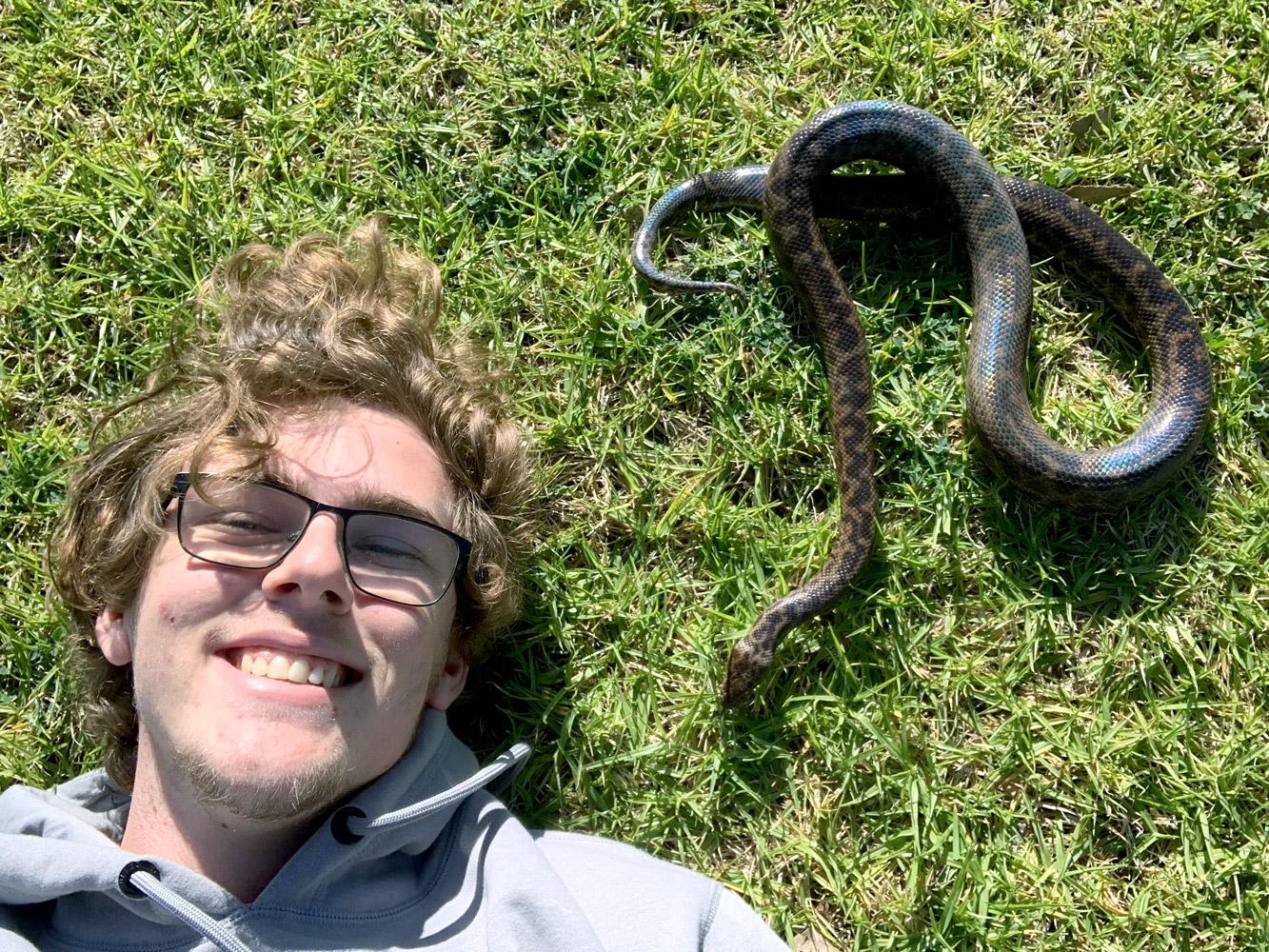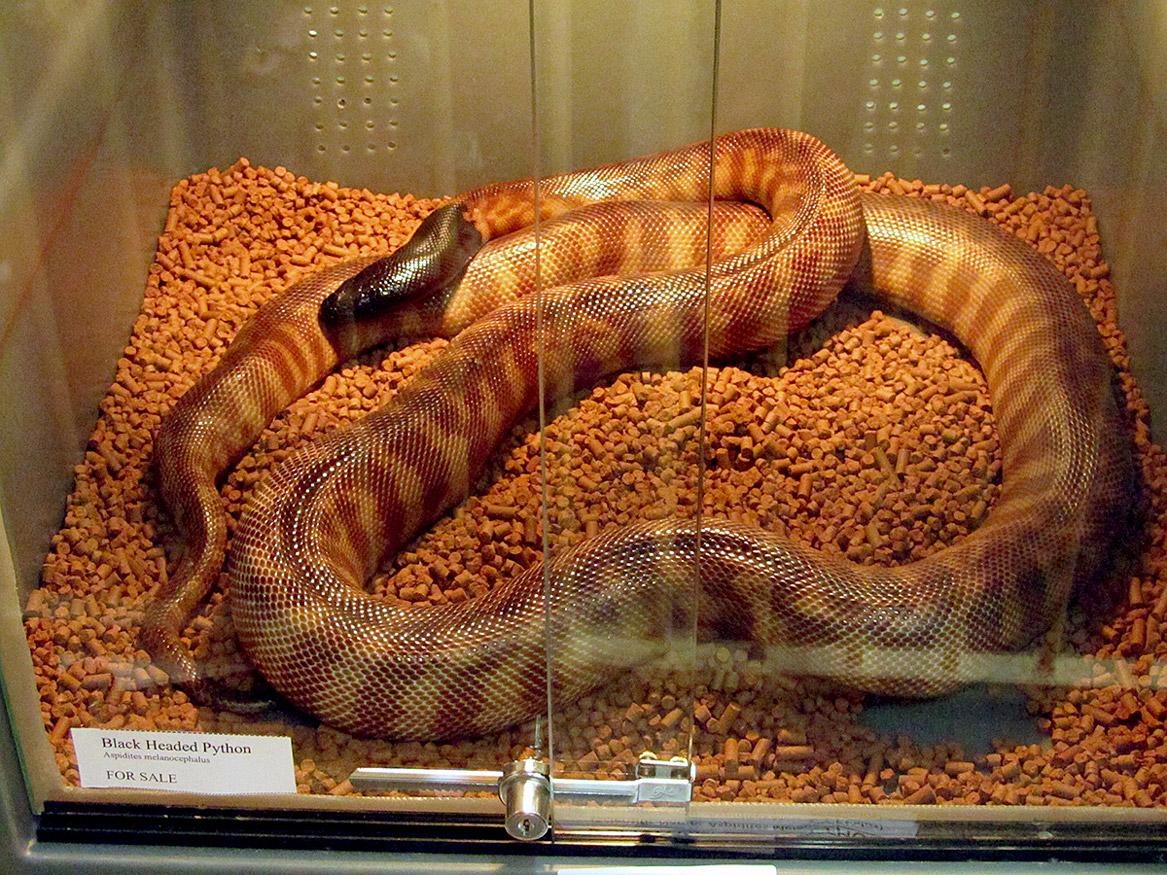Snakes need to stretch, scientists say
The minimum enclosure size for snakes in captivity should enable them to stretch out fully, say animal welfare experts.
An international team of researchers including scientists from the University of Adelaide, has found overwhelming evidence which shows that minimum enclosure sizes for snakes should permit them to stretch fully in all directions – and that original information that underpinned enclosure recommendations was based on ‘rule of thumb’ ideas.
The researchers hope the new scientific evidence will promote new legislation and changes to advice provided to reptile owners on enclosure sizes, to promote better snake welfare.

Pilates at the park: University of Adelaide animal behaviour student Harry Kent stretches out with Lizzie the pet spotted python (Antaresia maculosa).
Image by Kenty's Wildlife
“What we found was that the overwhelming evidence based on scientific study was that snakes did need to stretch, and this promoted aspects of good welfare,” said co-author Dr Alexandra Whittaker, from the University of Adelaide’s School of Animal and Veterinary Sciences.
“However, in many jurisdictions around the world - including some Australian states - advice suggested less that one snake length was acceptable and appeared to be based on decades-old common practices rather than scientific evidence.
“South Australia doesn’t have any formal guidance on the subject. Only New South Wales, Victoria and Queensland have codes of practice around reptile enclosure sizes.”
In Victoria, the minimum enclosure size is less than half a snake length; in Queensland, it’s half a snake length; and in New South Wales, advice is provided on the total area of the floor or wall surface for different species, rather than the actual length of the animal.
Meanwhile, in the United Kingdom, current government guidelines state that snakes in pet shops must be housed in enclosures that are sized at only two thirds of the snake’s body length. The researchers found that the original ‘evidence’ for these recommendations could be traced to two books based on common practices and personal opinion.

A black-headed python (Aspidites melanocephalu) for sale in Sydney.
Image by Newtown grafitti from Sydney, Australia, CC BY 2.0
“What we hope happens is that regulatory guidance on an international scale becomes unified to recommend at least one snake length minimum enclosures,” Dr Whittaker said.
“This would be based on a review of evidence and also aligns better with the considerations applied in other species, such as dogs and cats.
“The goal of this would be to improve welfare for snakes held in captivity.”
The research published in the journal Animals involved key animal welfare experts and herpetologists from across Europe, the UK, North America and Australia.
